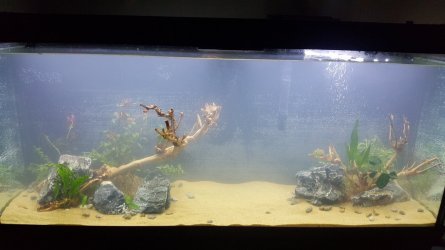I like the corydoras you named, I didn't know the orange one and also I will try to get cardinal tetras. Also with all the things you listed + what I listed for exemple : 15 cardinal tetra, 15 rasboras, 5 pearl gourami, 5 ottocinclus, 10 corydoras, 1 amano shrimp, one nerite, will I be still able to not do a water change during 2 weeks if I am in vacation? I have and will have more fast growing plants and I have a filter for 40 to 70 gallon. I prefer to understock just to be sure
Temporary things like vacation is not the same as regular week-by-week care for the rest of the year, and if the fish are healthy with the week-by-week largish water changes they can manage through a vacation. Not feeding them during the vacation helps too.
I would like to get bolivian ram or appistograma but I am scared they would be agressive when they would possibly breed. I really like the idea of sparkling gouramis, I didn't think about that
If you have a male/female pair of any cichlid, they will likely spawn (though the "bonding" issue does hold up for most of them). The Bolivian Ram does very well as a solitary fish in a tank of characins, cories, etc. My male Bolivian thrived into his 9th year (normal life expectancy is 4-5 years) on his own in a 5-foot tank of 50+ cories and 120 or more upper characins. He ruled the tank, though, there was never any doubt about that in any of the other fishes' minds. Cichlids will push cories away from "their" food, since both are substrate feeders, but cories are pretty well protected, though a spawning pair of some cichlids could be a different matter.


